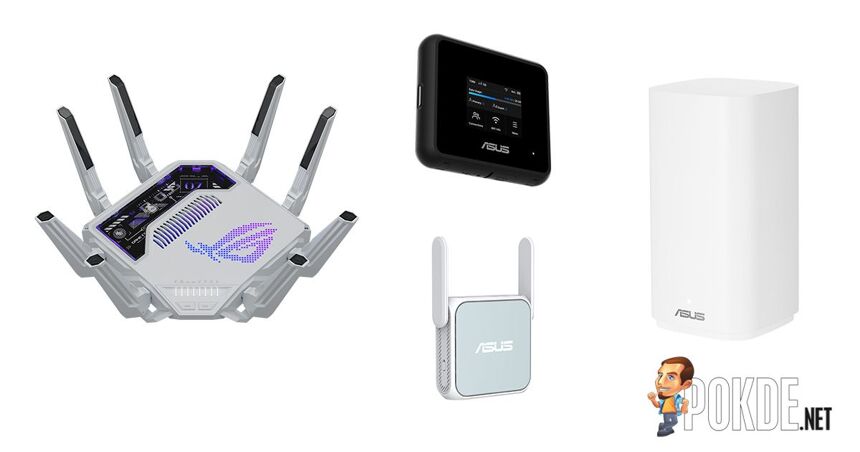WiFi 7: Backgrounder and CES 2025 Announcements
Backgrounder:
Wi-Fi 7, also known as the IEEE 802.11be-2024 [1.], is the latest generation of Wi-Fi technology, offering significantly faster speeds, increased network capacity, and lower latency compared to previous versions like Wi-Fi 6, by utilizing features like wider 320MHz channels, Multi-Link Operation (MLO), and 4K-QAM modulation across all frequency bands (2.4GHz, 5GHz, and 6GHz). Wi-Fi 7 is designed to use huge swaths of unlicensed spectrum in the 6 GHz band, first made available in Wi-Fi 6E standard, to deliver a maximum data rate of up to 46 Gbps.
Note 1. The Wi-Fi Alliance began certifying Wi-Fi 7 devices in January 2024. The IEEE approved the IEEE 802.11be standard in 2024 on September 26, 2024. The standard supports at least one mode of operation capable of supporting a maximum throughput of at least 30 Gbps, as measured at the MAC data service access point (SAP), with carrier frequency operation between 1 and 7.250 GHz, while ensuring backward compatibility and coexistence with legacy IEEE Std 802.11 compliant devices operating in the 2.4 GHz, 5 GHz, and 6 GHz bands.
………………………………………………………………………………………………………………………………………………………………………………………………..
The role of 6 GHz Wi-Fi in delivering connectivity is changing, and growing. A recent report from OpenSignal, found that smartphone users spend 77% to 88% of their screen-on time connected to Wi-Fi. Further, the latest generations of Wi-Fi (largely due to the support of 320 MHz channels and critical features like Multi-Link Operation) are increasingly more reliable and deterministic, making them viable options for advanced applications like extended reality in both the home and the enterprise.
New features:
- 320MHz channels: Double the bandwidth compared to Wi-Fi 6E.
- Multi-Link Operation (MLO): Allows devices to connect using multiple channels across different bands simultaneously.
- K-QAM modulation: Enables more data to be transmitted per signal.
1. TP-Link unveiled the Deco BE68 Whole Home Mesh Wi-Fi 7 solution, which is claims delivers speeds of up to 14 Gbps, covering 8,100 sq. ft. and supporting up to 200 connected devices. “Featuring 10G, 2.5G, and 1G ports, it ensures fast, reliable wired connections. With Deco Mesh technology, the system delivers seamless coverage and uninterrupted performance for streaming, gaming, and more,” stated the company.
TP-Link also announced an outdoor mesh system to address the increasing demand for outdoor Wi-Fi connectivity. The Deco BE65-Outdoor and Deco BE25-Outdoor nodes are equipment with weather, water and dust proof enclosures. When combined with the Deco indoor models, a cohesive and reliable indoor-outdoor mesh network that allows a user to move seamlessly between the two environments can be achieved.
2. Intel Core Ultra Series 2) are all equipped with Wi-Fi 7 capabilities integrated into the silicon, Intel has made Wi-Fi its standard choice. On its website, the company explained that a “typical” Wi-Fi 7 laptop is a potential maximum data rate of almost 5.8 Gbps. “This is 2.4X faster than the 2.4 Gbps possible with Wi-Fi 6/6E and could easily enable high quality 8K video streaming or reduce a massive 15 GB file download to roughly 25 seconds vs. the one minute it would take with the best legacy Wi-Fi technology,” Intel added.
3. ASUS New Wi-Fi 7 Router Lineup

ASUS unveiled a range of new networking products at CES 2025, including the ASUS RT-BE58 Go travel router and ASUS 5G-Go mobile router – both recipients of the CES 2025 Innovation Award – alongside the ROG Rapture GT-BE19000AI gaming router and the ZenWiFi Outdoor series for home Wi-Fi setups.
- The RT-BE58 Go – is a dual-band, Wi-Fi 7-capable mobile router supports three use cases: 4G/5G mobile tethering, public Wi-Fi hotspot (WISP), and conventional home router. It also supports VPN from up to 30 service providers and subscription-free Trend Micro security for online protection, while AiMesh compatibility allows for the router to be paired with other ASUS routers to provide wider signal coverage.
- The ROG Rapture GT-BE19000AI is the iteration of the GT-BE19000 router released last year, this time with an NPU onboard coupled with CPU and MCU. This tri-core combination enables features like ROG AI Game Booster and Adaptive QoS 2.0 to reduce network latency by up to 34% for supported games, plus 46% power savings through its AI Power Saving mode that saves power based on usage patterns. Additional features include advanced ad and tracker blocking, network insights, and RF scanning.
References:
https://standards.ieee.org/ieee/802.11be/7516/
https://en.wikipedia.org/wiki/Wi-Fi_7
https://www.mathworks.com/help/wlan/ug/overview-of-wifi-7-or-ieee-802-11-be.html



Wi-Fi HaLow – the sub-GHz, long-range Wi-Fi standard designed for IoT – is now gaining significant traction as the wireless standard of choice for a wide range of IoT use cases. At WiFi NOW we’re delighted that we will be supporting the growing Wi-Fi HaLow ecosystem by showcasing all things Wi-Fi HaLow at the first ever and inaugural Wi-Fi HaLow Global Summit in Mountain View, California, on April 28, 2025.
At CES, Sydney, Australia headquartered Morse Micro <https://www.morsemicro.com/> released their second-generation Wi-Fi HaLow chip (SoC) named MM8108, promising longer range, higher throughput (up to 42 Mbps), and better power efficiency – meaning better performance in every category.
The new chip boasts the world’s first 256-QAM operation below 1 GHz, a 26 dBm power amplifier, WPA3 encryption, and power saving features for battery operation (read more here). As another Wi-Fi HaLow first, Morse Micro released a reference dongle design intended to make it easy for vendors to incorporate HaLow into existing device designs. At WiFi NOW we believe that a key to HaLow adoption is the (multi-protocol) integration of HaLow into existing Wi-Fi systems for massive range increase and vastly expanded IoT capabilities, especially for industry.
In early December Morse Micro released an AP reference design that delivers usable connectivity at an impressive range of 9.9 miles equivalent to 15.9 km (read more here). Add to this that Morse Micro’s market momentum is accelerating. Among other things the company won this year’s Best Wi-Fi IoT Product for an amazing fifth consecutive year. The company has also expanded its ecosystem collaboration to include a significant list of module and AP partners in 2025 including Quectel, Vantron, and others.
ABI Research estimates that the Wi-Fi HaLow market will grow to 108 million devices shipped by 2029.
https://wifinowglobal.com/news-blog/ces-2025-morse-micros-halow-shines-mediatek-google-team-up-new-products-from-netgear-tp-link-asus/